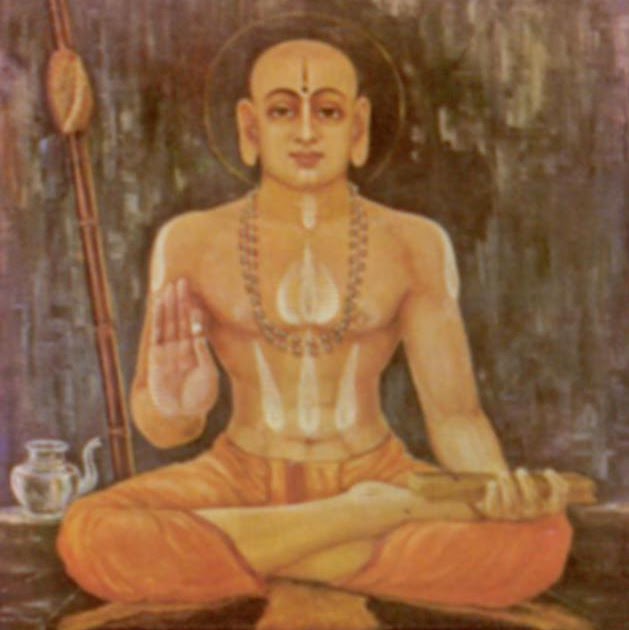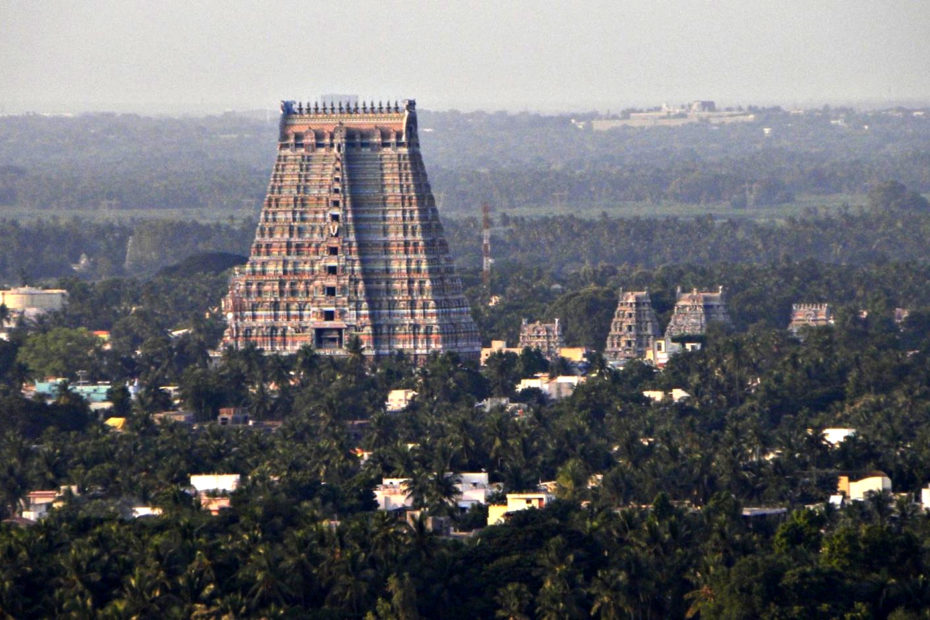- Author : Shriram Ravichandran, Chennai
- Image : Wikipedia.org
Teerthanusaranam (undertaking pilgrimages to sacred tirthas) has been stated as one of the samanya dharma (dharma applicable to everyone) in various smritis and puranas. Such pilgrimages undertaken with a sense of devotion to the various temples / devatas of the towns, elevate our minds and instill a sense of tranquility. The pilgrimages also offer the devotees an opportunity for satsanga where everyone’s focus in the large group is the namasmarana, dhayana and japa of the Devatas in the same sacred places where many generations of sajjanas have visited for Devata darshana.
All our yatis starting from Sri Madhwacharya himself have travelled across our Bharata desha to promote bhakti in kshetras, renovate temples that required attention, contribute to building new temples and consecrate new murtis. One such sacred kshetra that is always close to the heart of followers of the Madhwa sampradaya is the abode of Sri Ranganatha at the Kaveri river island of Srirangam near Tiruchirapalli in Tamilnadu. This post is a short description of one of the grandest temples in our Bharata desha.
The iconic Sri Ranganatha swamy temple has been visited by our greatest saints – Sri Madhwacharya, Sri Jayatirtha, Sri Vyasa tirtha, Sri Sripadaraja tirtha, Sri Raghavendra tirtha and Sri Vadiraja tirtha. Sri Vadiraja tirtha in his Dakshina Prabandha chapter of Tirtha Prabandha dedicates eleven verses in all to Sri Ranganatha, Chandra pushkarini tirtha in the Ranganatha swamy temple and the River Kaveri. In the first verse, Sri Vadiraja swamy aptly describes Sri Ranganatha as the one who resides in the heart of Kaveri (Kaverihrdaye Vasan). The following is the Verse 8 from Dakshina Prabandha chapter of Tirtha Prabandha.
yathā śriyā śayānaḥ satataṁ raṅgakṣētrē vyarūrucaḥ |
tathā harē mēsntaraṅgē raṅganātha virōcaya ||
“O Ranganatha! Just as you are shining always at Ranga kshetra while resting with Mahalakshmi, may you always shine in my heart”
Description of the Sri Ranganatha swamy temple: The Ranganatha swamy temple at Srirangam is the world’s largest temple. It is spread over 150 acres. It has 21 gopurams, 7 prakarams and 60 shrines. It is a devotee’s delight to visit this sacred kshetra. The main moorthy is Sri Ranganatha reclining on Adisesha with his face slightly facing the south. As per the sthala purana, Sri Ranganatha was the kula devata of the Kings of Iskhvaku dynasty. A moorthy of Sri Ranganatha was gifted by Sri Rama to Vibheeshana for his services. While Vibheeshana was on his way to Srilanka with the deity, he is supposed to have rested at Srirangam. Sri Ranganatha refused to get up and preferred to stay there in Srirangam itself. To console Vibheeshna, Ranganatha said that He would face south in the direction of Lanka.
The main moorthy of Sri Ranganatha is in a reclining posture and is made of stucco. No ritual involving abhisheka is performed to Him. All tirunakshatra pujas and rituals are carried out with utsava moorthy – Kasturi Ranga or Azhagiya Manavalan (the handsome groom in Tamil). There are more than 600 inscriptions in various scripts of Kannada, Telugu, Sanskrit granthas, copper plates from Vijayanagar times that detail the contributions and grants by various kings, chieftains and gurus to this temple for its administration.
The temple and festival of Srirangam finds a mention even in the oldest known Tamil literary work of the 2nd century CE – Aganaanuru and Silapadikaram. The current temple structure has been rebuilt during the Nayaka period in the 17th century. Of the multiple architectural marvels in the temple, the most significant being the Raja Gopura which is the tallest Gopura in Taminadu, second tallest in India and the sculpture showing the 1000 pillared hall. There are two temple tanks – Chandra and Surya pushkarni within the temple complex. Of the various sub-shrines, the most popular are Venugopalaswamy temple built during the Hoysalas / Nayaka times and the Dhanvantri shrine of the Devata who blesses good health for all, built during Hoysala and Vijayanagara times.

